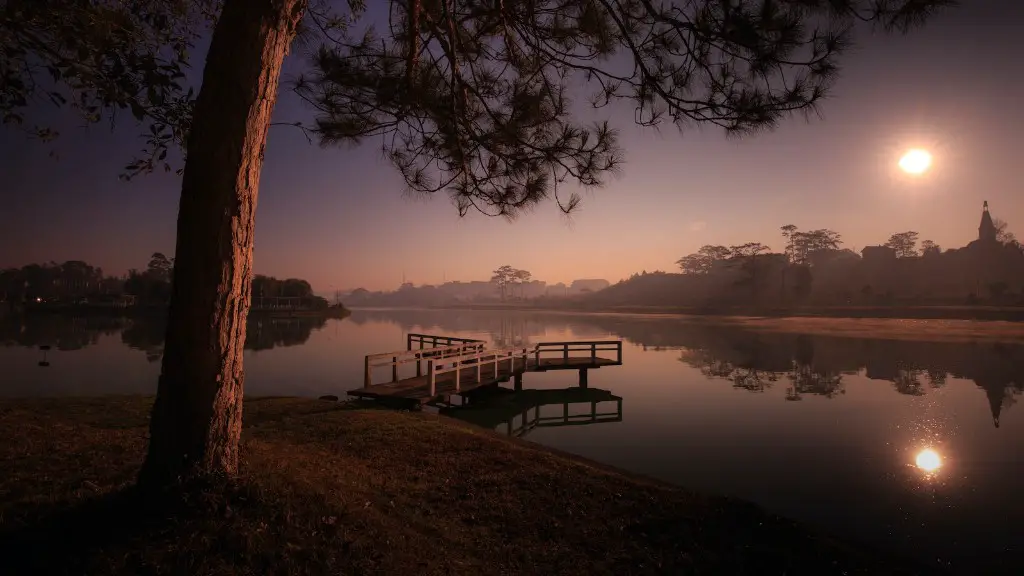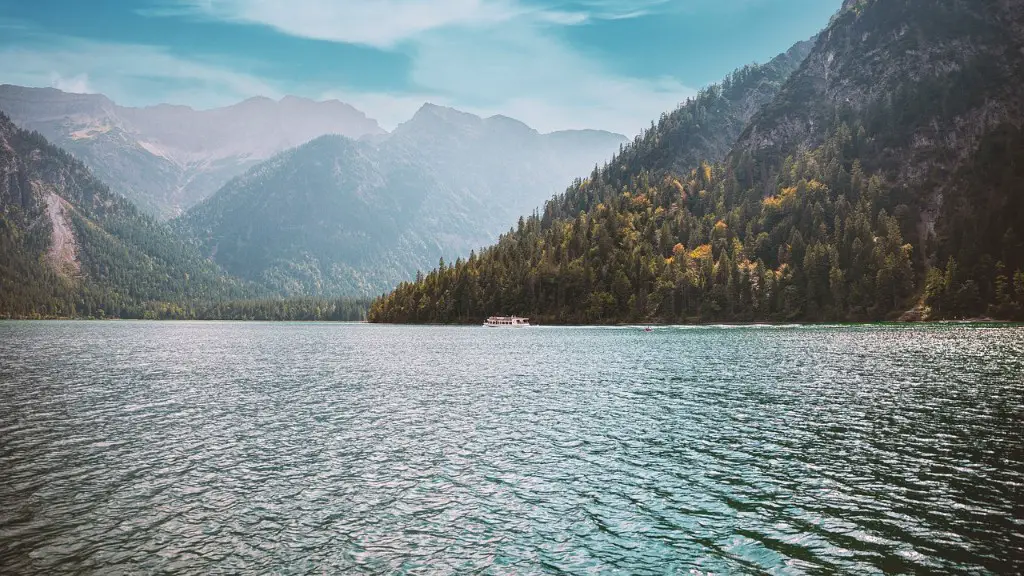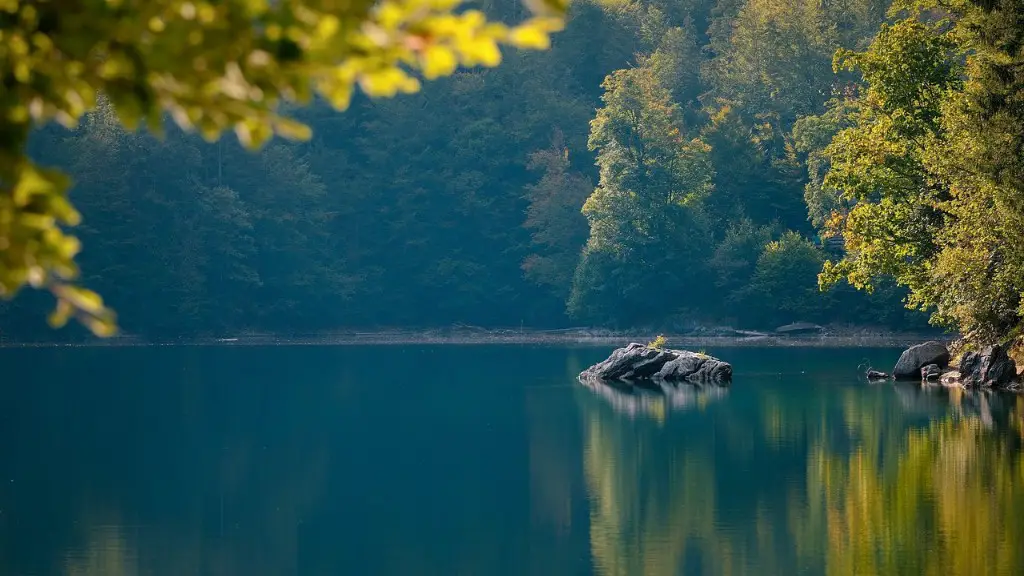Location, Size & Volume of Lake Baikal
Lake Baikal is the deepest lake in the world and is located in Siberia, in the Russian Federation. It is located near the Mongolian border and is the largest freshwater lake in the world, by volume. It holds 20 percent of the world’s fresh surface water and comprises one fifth of the world’s total supply of fresh water. There are many islands in the lake and it is a unique and impressive sight.
Lake Baikal is a vast 420 miles (680km) long and spans 31,722 square miles (82,200 sq km). It is a rift lake, which is formed by two tectonic plates slowly separating, and is 5,387 feet (1,642m) deep at its deepest point. With an average depth of roughly 2,320 feet (710m), it is estimated that the total volume of water in Lake Baikal is 23,600 cubic miles (98,000 cu km.). This is enough to fill an entire sea, something that makes it even more impressive.
Climate & Ecosystem of Lake Baikal
The climate of the region surrounding Lake Baikal is continental and features severe winters. On rare occasions, the temperature drops below –58 degrees Fahrenheit (–50 degrees Celsius), making it one of the coldest places in the world. The average temperatures remain below freezing for about five months of the year, and even during the summer months, the daytime temperature rarely goes over 68 degrees Fahrenheit (20 degrees Celsius).
The lake is home to many species of plants and animals, some of which are unique to its ecosystem. It has over 350 species of fish, making it the most species-rich lake in the world. The most iconic species of fish is the Nature Reserve endemic variety, the Baikal Omul. Lake Baikal is also home to many species of birds, with over 25 species of ducks alone.
History & Cultural Significance of Lake Baikal
The Lake has been inhabited since the Stone Age and has a deep spiritual and cultural significance for many people. The waters of Lake Baikal are held sacred to many traditional religions and its shores are dotted with many sacred places. The lake is also of great scientific importance, as its fossil records provide evidence of the existence of a cooling climate.
The area around Lake Baikal was originally inhabited by the Buryats and the Mongolians. In the 17th century, the area was occupied by the Russians and the Buryats were forced to relocate. The area has been a national park since 1925, and the lake was declared a UNESCO World Heritage Site in 1996.
Protection & Preservation of Lake Baikal
The Ministry of Natural Resources and Environment of the Russian Federation is responsible for the protection of Lake Baikal and its surrounding environment. In the 1990s, a ban on oil exploration and transportation was implemented. The lake is now polluted mainly by fertilizers from the surrounding farms, as well as wastewater from local factories.
In July of 2016, a Circum-Baikal Railway was closed permanently to protect the lake from further damage. This railway was built to transport goods and materials around the lake, but due to its effects on the environment it was decided to close it down.
Environmental Threats to Lake Baikal
One of the biggest threats to Lake Baikal is illegal logging. In 2017, a report was released by the WWF stating that illegal logging was causing soil erosion and causing the lake’s water levels to drop. Additionally, proposals have been made to build a new airport close to the lake, which could also pose a threat to the lake’s ecology.
Another threat to Lake Baikal is climate change. The lake’s average water temperature is increasing and its ice cover is shrinking rapidly, both of which can have a devastating effect on the lake’s ecosystem.
Tourism and Exploitation of Lake Baikal
Lake Baikal is a popular tourist destination, as it offers a unique experience for nature lovers, as well as for those looking for an adventure. Visitors can take part in activities such as hiking, boating, horse riding and fishing.
Despite being a protected area, there are still threats to the lake from exploitation such as fishing and tourism. It is important that visitors to the lake adhere to the rules and regulations set in place to protect the lake and its inhabitants.
Saving Lake Baikal
In the past decade, a number of initiatives have been launched to protect and restore the lake. One such initiative is The Great Baikal Trail, a project which involves the construction of a series of trails around the lake to create an uninterrupted system of paths for visitors.
The Great Baikal Trail project and other local conservation initiatives involve the local community, who play a vital role in protecting the lake. Local knowledge, perspectives and resources are essential in protecting the lake and its extraordinary wildlife.
Effects of Oil and Mining Industry on Lake Baikal
The oil and gas industry has affected the lake in two major ways. Firstly, by polluting the waters with oil and other hazardous materials, which can have devastating results for the lake’s ecosystem. Secondly, the extraction of oil and gas has caused damage to the lake’s underground aquifer and has resulted in seismic activity as well as acidic soils.
To prevent further damage from the oil and gas industry, Russian authorities have imposed a ban on further drilling and exploration in the lake. Additionally, a number of other protective measures have been put into place, such as increased patrols, fines for polluters, and public awareness campaigns.
Conclusion: Preserving Lake Baikal
With a rich biodiversity and immense environmental significance, Lake Baikal is a priceless natural resource that must be safeguarded. Local communities must be empowered to protect their environment and progress must be made to ensure that the lake’s fragile ecosystem is not further damaged by pollution and illegal activities.
Fortunately, a number of initiatives are in place to protect and preserve the lake, and with continued conservation efforts, Lake Baikal can remain a sanctuary of pristine beauty for years to come.



Hi, It has come to our attention that you are using our client’s photographs on your site without a valid licence. We have already posted out all supporting documents to the address of your office. Please confirm once you have received them. In the meantime, we would like to invite you to settle this dispute by making the below payment of £500. Visual Rights Group Ltd, KBC Bank London, IBAN: GB39 KRED 1654 8703, 1135 11, Account Number: 03113511, Sort Code: 16-54-87 Once you have made the payment, please email us with your payment reference number. Please note that a failure to settle at this stage will only accrue greater costs once the matter is referred to court. I thank you for your cooperation and look forward to your reply. Yours sincerely, Visual Rights Group Ltd, Company No. 11747843, Polhill Business Centre, London Road, Polhill, TN14 7AA, Registered Address: 42-44 Clarendon Road, Watford WD17 1JJ